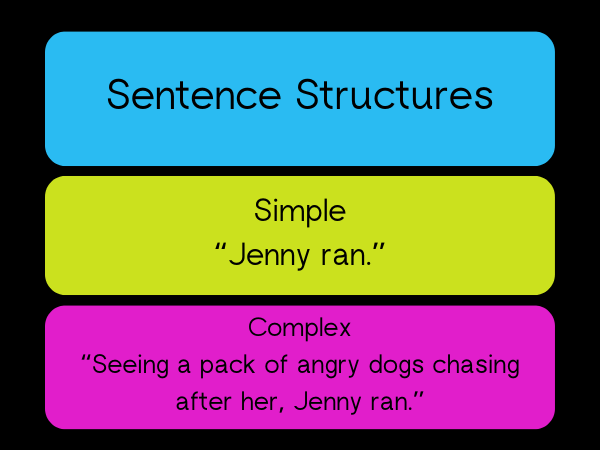- Nov 5, 2024 - 10 min read
7 Strategies To Develop Primary English Compo Techniques

An ever-present section in English papers, the purpose of English composition is to help present your ideas, thoughts and emotions in a meaningful and understandable way.
Not sure where to begin in your compo writing? Read below to learn 7 strategies essential to develop your English compo techniques to the next level💡. Use these strategies to stretch your creative writing skills and ace your PSLE composition writing in no time!

1. Determine the key words
For example, if the topic is about “An Act Of Kindness”, then the main key words are ‘Act’ and ‘Kindness’. From here, brainstorm the kind acts you would do in different situations, such as returning a lost item, or sharing something to someone who needs it more.
Given that the topic is phrased open-endedly, you may write about carrying out an act of kindness to a friend, family or stranger.

2. Construct an exciting opening paragraph
Provoke your reader’s attention from the start by opening your first paragraph with a flashback or a ‘hook’. Just like how a fishing hook with bait increases the chances of catching fishes, this technique helps draw your readers to your composition to read further.
For example:
“My life was never going to be the same again after seeing millions of cookies pouring from the sky.”
Constructing an exciting opening paragraph engages the reader by establishing the setting of what’s to come and helps set the mood for the rest of your composition.

3. Use literary devices to enhance your writing
Want to make your composition stand out more? Try using literary devices such as metaphors, similes, and hyperbole to express your ideas more vividly and creatively.
- A metaphor compares two unlike things by saying one is the other, without using ‘like’ or ‘as’. For example: “The library was a jungle.”
The above sentence does not mean that the library is packed with animals from the jungle. Instead, it means that the library was chaotic, describing the setting in a more imaginative and memorable way.
- Unlike a metaphor, a simile compares two different things using the words ‘like’ or ‘as’. For example: “The girl’s voice was loud like thunder.”
This sentence compares the loudness of the girl’s voice to thunder, giving a clearer idea of the girl’s character.
- A hyperbole is an exaggerated statement not meant to be taken literally. For example: “John could sleep forever.”
This does not mean that John will be sleeping for the rest of his life. But the point is clear in telling the reader that John was extremely tired.
By using literary devices like metaphors, similes, and hyperbole, they can engage your readers and spark imagination, enhancing your composition further in terms of bringing your imaginary world to life.

4. Build On Your Vocabulary
Compare these two sentences:
- “The moment she felt something cold and slimy on her shoulder, Sally shouted.”
- “The moment she felt something cold and slimy on her shoulder, Sally shrieked.”
Which sentence is clearer in getting the point across? Most of you would choose the second sentence due to a difference of a single word. Even though both words have similar meanings, one of them (‘shrieked’) provided a more specific and stronger impact. Try using these kinds of words to make your compo more vivid and come alive.
The next time you encounter a word that you don’t know the meaning of, write them down somewhere, like a notebook for your reference. This is useful to make your composition more interesting, and you avoid using the same words throughout your writing.

5. Model good writing
Observe and analyze these components to have a better understanding of writing techniques used by top-scorers in the following areas:
- Organization
- Vocabulary
- Grammar
- Writing style, and
- Creativity
Best of all, these resources can be readily found online and in most bookstores across Singapore.

6. Mix up your sentences
To prevent your composition’s pacing from feeling stale and dull, mix up the length of your sentences. One way to do so is by using a combination of simple and complex sentences to keep your readers engaged.
- Simple sentences work best to provide clarity and build the foundation of ideas. For example: “Paul wakes up at 6am every morning.”
- Complex sentences are great for expressing more detailed thoughts and ideas, providing additional information to support your point. Here’s an example:
“Paul, who loves watching cartoons before going to school, wakes up at 6am every morning.”

7. Revise & improve your composition
Make sure to revise, edit, and proofread to improve your composition. Setting aside time to make revisions can mean a difference between an AL1 and AL2 in your composition.
Do:
- Check for correct punctuation, spelling errors, and proper grammar.
- Make sure that your sentences flow naturally by reading your composition several times.
- Check that your composition has a clear introduction (start), conflict (middle), and resolution (end).
Conclusion
At Edufirst, we offer Primary English tuition covering topics from Primary 1 to 6 to guide you in writing captivating compositions to impress. Our Primary English tuition includes creative writing classes, as well as teaching the right skills and techniques to tackle difficult comprehension questions, among other topics.
Best of all, we’ll give you the attention you need by providing individualized coaching targeting your weak points. Drop us a call or a message if you are interested to learn more, and we’ll get in touch with you shortly!
Still on the fence? Register and arrange a trial session with us now!





